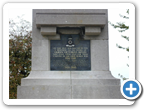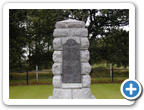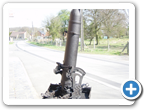The Western Front Today - Hill 60
Hill 60 suffered an extremely turbulent history throughout the war. Heavily shelled and mined by both sides, the ground forming Hill 60 - literally 60 metres above sea-level - today remains the final resting place for countless soldiers buried somewhere beneath its grassy foundations.
Even with such a slight incline - the man-made result of spoil from a nearby railway cutting in the nineteenth century (no longer present) - the hill proved an invaluable vantage point from which to view the wider battlefield and so was much sought and fought after by the allied and German forces.
The Germans captured Hill 60 from the French forces in December 1914.
When the British relieved the French in the region following the race to the sea it was determined that it must be retaken at all costs. A great deal of the fighting around Hill 60 was underground and it is believed that the first British mine of the war was detonated underneath Hill 60; and Hill 60 was primed with two mines along with 17 others to signal the start of the Messines battle on 7 June 1917.
After the war Hill 60 was acquired by the Queen Victoria's Rifles and the area fenced in.
Even today the hill is a mass of hillocks and small craters. Sheep roam across the grassy area. Hill 60 was the subject of many post-war pilgrimages by returning veterans.
Today the area is owned by the CWGC and is little changed since 1918. A plaque at the site is inscribed with details of Hill 60's chequered history.
It records that it was taken from the French by the German forces on 10 December 1914, recaptured by the British on 17 April 1915, retaken by the Germans on 5 May 1916, ceded back to the British on 7 June 1917 (the first day of the Messines offensive), taken once again by the Germans in April 1918 (during the great Spring push) and its final capture by the British on 28 September 1918.
There is a small private museum nearby (see photographs below).
Feature: The Capture of Hill 60 in 1915
Film Footage of Hill 60 (1)
Film Footage of Hill 60 (2)
References:
Before Endeavours Fade, Rose E.B. Coombs, After the Battle 1994
Major & Mrs Holt's Battlefield Guide - Somme, Leo Cooper 2000
Prevalent dysentery among Allied soldiers in Gallipoli came to be referred to as "the Gallipoli gallop".
- Did you know?





















